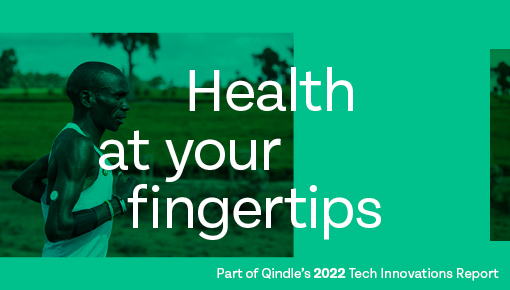The smartness of Smart Packaging
Smart packaging is rapidly evolving and it still has enough potential for further growth. But what is it exactly? Smart packaging is, simply put, a package with extended functions. Some provide information about the product, such as temperature or level of freshness, allowing manufacturers and retailers to identify products about to spoil. Others offer the possibility for brands to connect and interact with their consumers. Scan a QR code, and you will shortly land in a digital environment where you can learn more about the product, interact with the brand or even play with other engaged users.
While some companies are innovating in terms of materials and looking for new technologies, others focus on reliable, well-known tools and use them, well, smartly. Because the smartness of smart packaging, as we see it at Qindle, goes beyond the technology and into the positive experiences it can offer. It is only valuable when the package:
- understands the user’s needs and wishes;
- not only solves problems but offers new exciting opportunities and
- creates a positive, if not emotional, connection with the brand.
To achieve that, brands need talented creative professionals who might sometimes use a ‘simple’ QR code to provide the best user experience a brand or product needs.
Here, we present inspiring examples of how brands are using Smart Packaging beyond the buzz of technology and adding real value.
Truly get them
Smart packaging features allow brands to collect data in ways never possible before. Brands can now better understand consumer behaviour and improve the product, packaging and digital experience.
Even before a product hits the market, smart packaging brings crucial information about its (potential) handling and supports consumer research. Avon incorporated sensors in their ANEW Reversalist Infinite Effects Night Treatment Cream bottles which detected how and how often consumers used them. This kind of consumer research is, according to the brand, less biased as it tracks the actual behaviour and not what the consumer would like the brand to hear during an interview.
Yet another way of using smart packaging for consumer research is through the metaverse. By combining the latest hot item in digital technology with an easy-to-use tracking device, Accenture, in collaboration with a European Luxury brand, put together a showroom in the metaverse. Here, users tested products and received instant support by scanning or activating smart packaging.
Surprise them
It is no news that consumers are demanding brands to have real sustainability agendas. Furthermore, consumers are more informed and understand that just replacing one plastic for another or using more paper does not cut it. So, to break the noise of sustainability claims and commit to real change, brands must be serious about their environmental impact and transparently communicate about it.
Once an individual packaging obtains a tracking device such as an RFID tag, QR code or barcode, companies can track its journey throughout the supply chain and communicate it to consumers. Atma.io is taking it one step further and using its ‘Real-time Carbon Impact Analytics’ to track the packaging’s carbon emission throughout the product’s journey.
Ink, the primary material used to print text and graphics on pack, presents a difficult challenge regarding recyclability as it must be entirely removed from the package for this to be recycled. Lenor, a Procter and Gamble brand, is now using digital watermarking as an alternative to ink. This way, the brand can switch to 100% transparent bottles, ideal for recycling processes, and add an easy-to-remove sensorial shrink-sleeve label for product and brand information. The digital watermark simplifies the sorting and recycling processes.
Connect on a deeper level
User-friendly design does not only mean getting to know consumers in general; it means understanding that there is a variety of diverse people, each with specific needs.
Zapvision uses a special type of QR code which can be scanned at 5 times the distance of a regular one. After scanning, the user receives a text-to-speech message with information about the product and its reach to the user. This method makes product information available to all, regardless of their visual condition. Besides, and according to Zappar, the company behind this technology, incorporating such a QR code is easy and affordable to all brands.
There’s only so much information which fits on a pack, but sometimes consumers have specific questions and needs. Ask AMA is an AI-based pre-sale customer support service that, once activated by a QR code or a weblink, answers individual questions through a voice chat. Unlike chatbots, Ask AMA does not reply with preprogrammed answers. Through machine learning, it can understand questions based on the information the consumer provides, make autonomous decisions and respond accurately and in a personalized manner.


